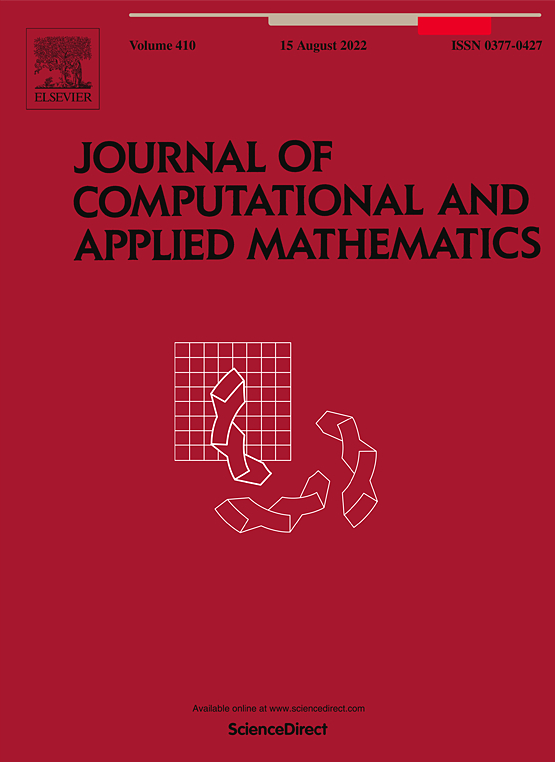
Journal of Computational and Applied Mathematics (JACM) - Volume 236, Issue 13 论文列表
| 点击这里查看 Journal of Computational and Applied Mathematics 的JCR分区、影响因子等信息 |
| 卷期号: Volume 236, Issue 13 |
| 发布时间: July 2012 |
| 卷期年份: 2012 |
| 卷期官网: https://www.sciencedirect.com/journal/journal-of-computational-and-applied-mathematics/vol/236/issue/13 |
本期论文列表
A discrete time inventory system with postponed demands
Analysis of a FEM–BEM model posed on the conducting domain for the time-dependent eddy current problem
A modified conjugate gradient algorithm with cyclic Barzilai–Borwein steplength for unconstrained optimization
G3 quintic polynomial approximation for Generalised Cornu Spiral segments
The Nevanlinna–Pick problem on the closed unit disk: Minimal norm rational solutions of low degree
Error estimates of quasi-interpolation and its derivatives
Generalized beta prior models on fraction defective in reliability test planning
Numerical simulation and linear well-posedness analysis for a class of three-phase boundary motion problems
Semilocal convergence of a continuation method with Hölder continuous second derivative in Banach spaces
Finite element simulations of window Josephson junctions
Long time stability of four methods for splitting the evolutionary Stokes–Darcy problem into Stokes and Darcy subproblems
A sharp version of Bauer–Fike’s theorem
Efficient computer search of large-order multiple recursive pseudo-random number generators
A fitting algorithm for real coefficient polynomial rooting
Quasi-interpolation for linear functional data
Continuous-time accelerated block successive overrelaxation methods for time-dependent Stokes equations
On the ruin probability in a dependent discrete time risk model with insurance and financial risks
Variance bounds and existence results for randomly shifted lattice rules
Iterative methods for solving nonlinear equations with finitely many roots in an interval
Finite element boundary value integration of Wheeler–Feynman electrodynamics
An L∞ stability analysis for the finite-difference solution of one-dimensional linear convection–diffusion equations on moving meshes
Piecewise polynomial collocation for linear boundary value problems of fractional differential equations
A type of matrix Padé approximant inspired by scalar component models

